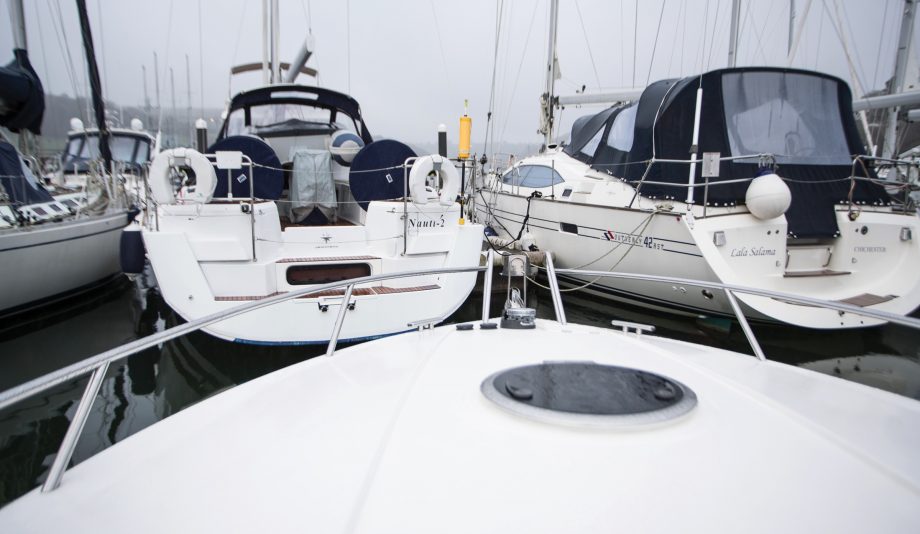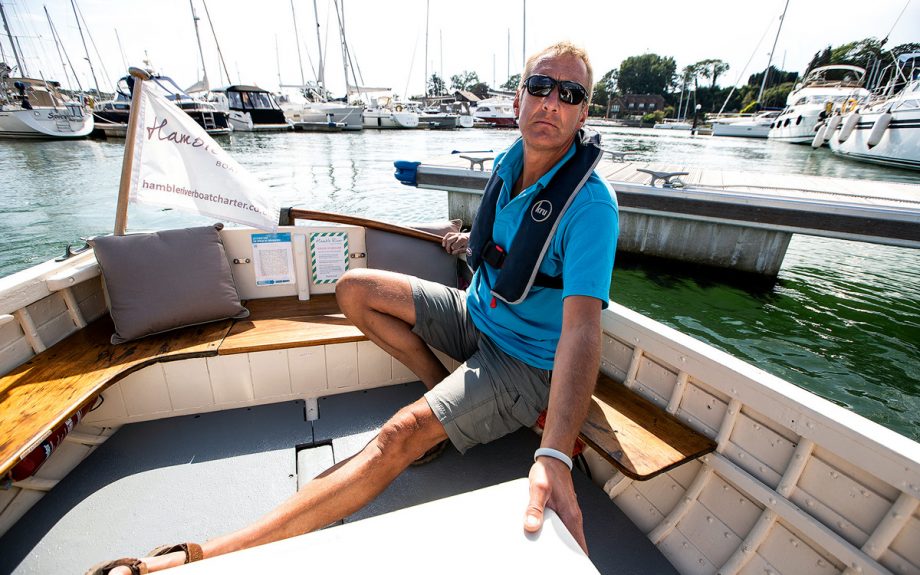How to manoeuvre a shaft-drive boat: Expert skipper’s tips with Jon Mendez

One of the joys of boating is the wide variety of different craft on offer. Whereas the vast majority of cars have four wheels and one engine and therefore drive in roughly the same way, boats are much more varied in terms of size, style, hull design and means of propulsion…

As a result they tend to handle very differently too, so making the switch from something like a single-engined planing sportsboat to a twin-engined semi-displacement cruiser requires a certain amount of readjustment from the skipper too.
So how do you go about doing that? For me, having a clear understanding of what’s happening when and why is vital to grasping what steering and throttle inputs are needed. This particular boat is a perfect example.
It’s a brand new Dale Classic 37 with a semi-displacement hull driven by twin Volvo engines on shafts and rudders. There’s a shallow keel running the length of the hull, which gives it slightly better grip on the water than a full- planing hull, but the tall bow means it’s likely to have a reasonable amount of windage too.
The drive system’s power delivery to the water and how to use it can be split roughly into thirds. Both propellers turn outward in ahead gear and inwards in astern.
However the positioning of the propellers, offset to either side of the centre line, gives one third of the turning ability; put port ahead and it will induce a turn to starboard and vice versa, with a pivot point about a third of the way back from the bow.
Putting that same port engine in astern will produce a similar turning motion by pulling the stern to starboard but this time with a pivot point closer to the stern. It’s a bit like pulling or pushing on one side of a shopping trolley’s handle.
Article continues below…

How to: Turn a single-engined boat in a tight space

Prop walk explained: What it is and how to use it to your advantage
The second third of our turning ability comes from the ‘paddle wheel’ effect of the large propellers. As well as driving the boat forward or astern, at slow speeds the shape of the blades also paddle the stern of the boat sideways.
In this case both propellers are paddling in the same direction as the offset – outwards in ahead and inwards in astern – helping the boat to turn to starboard when the port engine is in ahead or to port when the starboard engine is in ahead.
The last third comes from the rudders. Motor boat rudders are relatively small (when compared to sailing yachts’) as they are optimised for high-speed cruising efficiency rather than low-speed manoeuvring.
One way to increase the turning effect is by accelerating the flow of water past the rudder with the aid of the propeller in front of it; by throwing water at the rudder in this manner it dramatically increases the rate of turn – a technique that is often forgotten by the person at the helm.
Forget it at your peril, as on a windy day you will struggle to get the bow round and through the wind without using the rudder and the propeller in unison – or a lot more power! Lots of power can work but it also greatly increases the risk of things going horribly wrong.
Just remember that this technique only works in forward gear – when going astern the effect is negligible. The final tool in your locker is a bow thruster, which when used at slow speed (less than 2 knots) helps move the bow in the direction it is pushed but don’t forget that it also makes the stern move the opposite way.
First published in the December 2023 issue of MBY.
This article How to manoeuvre a shaft-drive boat: Expert skipper's tips with Jon Mendez appeared first on Motor Boat & Yachting.
Source: https://www.mby.com/video/how-to-manoeuvre-shaft-drive-boat-129894




